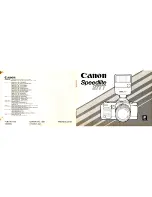
Ask the presenter to move around in the presentation area, and observe the video camera's tracking
behavior. What needs improvement?
Tuning Cheat Sheet
Many adjustments affect each other, so the tuning process may require some experimenting.
Tracking behavior
What it means
How to fix it
The presenter is
consistently off-center,
even when not moving.
The IR and video
lanyard shots don't
line up properly
Be sure that the lanyard is exactly centered in the
white rectangle of the IR image as you store a new
video camera lanyard shot. See
The IR camera
pan/tilt is out of
calibration.
Reset the pan/tilt position. See
At the closest approach to
the camera, part of the
presenter's face is not in
the frame.
The video camera's
lanyard shot is too
tight.
Store a new video camera lanyard shot, with more
head space than the current one. See
The presenter consistently
"outruns" the camera and
moves out of the frame.
Video camera
tracking speed is too
slow.
Slightly increase the speed scalar for the video
camera. See
.
The video window is
too large.
Make the video window slightly smaller. See
Adjusting the Video Window Width
.
The presenter is too
close to the cameras,
and outruns the IR
camera.
Store a new IR lanyard shot, with the IR camera
zoomed out to size the lanyard appropriately. See
Storing the IR Camera's Lanyard Shot
.
IR tracking speed is
too slow.
Slightly increase tracking sensitivity. See
The video camera
constantly makes small
adjustments during the
presentation.
The video window is
too small.
Make the video window slightly larger. See
Tracking is interrupted
when the presenter turns
away.
The IR camera does
not detect enough IR
to recognize the
lanyard.
Be sure the back of the lanyard is not covered by the
presenter's hair or clothing.
, zoomed in from the
existing shot.
slightly.
31
Integrator's Complete Guide to the RoboTRAK Presenter Tracking System
















































